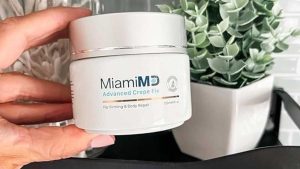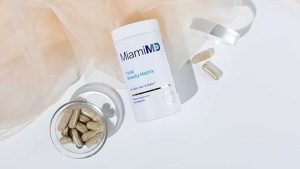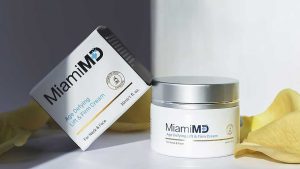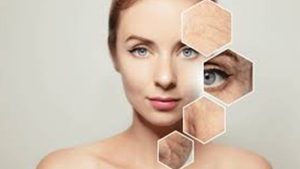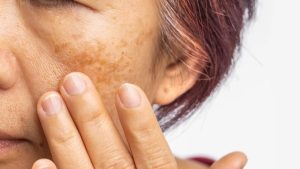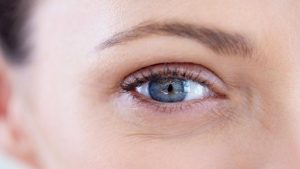How To Get Rid of Razor Bumps
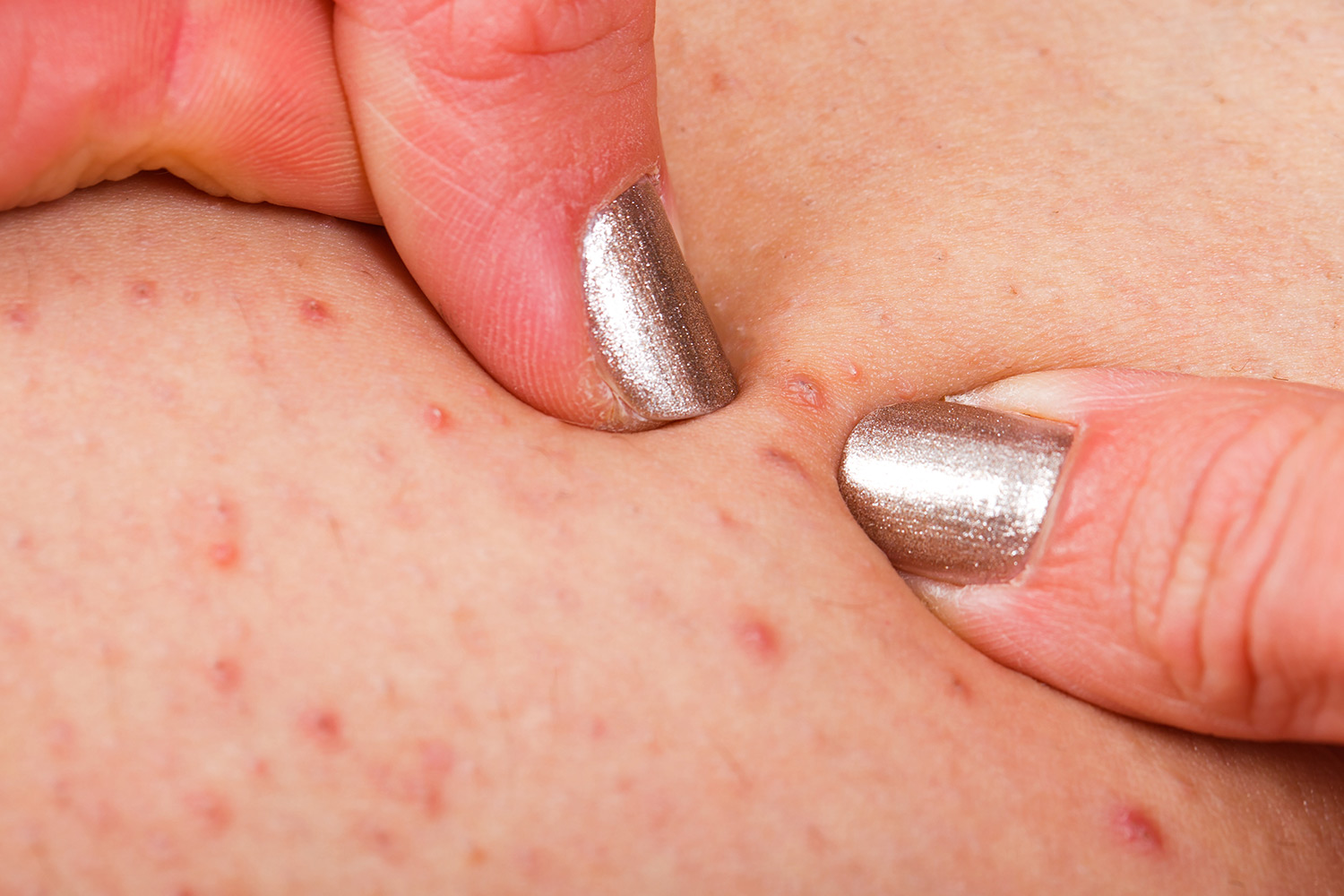
Whether you shave your armpits, legs, or upper lip, dealing with razor bumps can be incredibly disheartening. When you’ve put in the time to shave, you deserve to end up with soft, smooth skin. Luckily, you can make those negative side effects of shaving a thing of the past with the right knowledge.
To help, Miami MD has tips and tricks to help you get rid of razor bumps.
What Are Razor Bumps?
Razor bumps, or pseudofolliculitis barbae, are ingrown hairs that develop on the skin after using hair removal techniques like shaving with razor blades, plucking, or waxing.
These red bumps can be small or large and are hard or full of purulent, white discharge. They occur when the hair that has been removed starts to grow back from the hair follicle. However, instead of growing up and out of the skin like it should, the hair hits the surface and begins to curl around and back in.
Skin cells continue to regenerate, growing over the top of the follicle and the ingrown hair. That ultimately seals the hair in even more, effectively trapping it inside and creating the tell-tale razor bump.
You can develop razor bumps anywhere you remove hair, including your legs, underarms, face, pubic area, bikini line, and even your head.
Razor bumps are frequently lumped together with razor burn. While the two are related, they aren’t exactly the same thing. Razor burns result in skin redness and irritation that is the result of the friction involved during your shaving routine.
In most cases, razor burn is immediately apparent after you are finished with your hair removal. Razor bumps, on the other hand, usually take a few days to show up.
How To Get Rid of Razor Bumps
There is no quick remedy for razor bumps, no miracle cure that you can apply to the spots to make them immediately disappear. However, there are a few helpful tips that you can use to speed up the healing process and reduce the amount of time that you have to deal with them.
Try Salicylic Acid
The same ingredient that can calm acne and help your skin look its best and brightest can also help to reduce the length and severity of razor bumps. Suppose you’re not familiar with salicylic acid.
In that case, it is a naturally occurring beta-hydroxy acid that dermatologists frequently recommend due to its exfoliating properties that can clear bacteria and reduce your chance of razor bumps. This chemical exfoliant remains a popular skincare ingredient because it is oil-soluble, meaning it can penetrate deep into the pores and past the sebum. That action makes it incredibly effective at unclogging pores and calming down irritated skin.
Salicylic acid brings those benefits to help you deal with razor bumps, as well. Using it on your bumps sloughs away dead skin cells and allows the ingrown hair to penetrate back through the skin more easily. Meanwhile, it also helps to reduce their appearance as they fade.
Glycolic Acid Can Also Help
In addition to using salicylic acid to help remove razor bumps, its cousin glycolic acid can also be helpful. Unlike salicylic acid, which is oil-soluble, glycolic acid is a water-soluble alpha-hydroxy acid. While it can’t penetrate as deeply into the skin, it can work just as effectively at exfoliating the skin and clearing the way for the ingrown hair to grow in the right direction, thus reducing the appearance of razor bumps.
Tweeze The Ingrown Hair (In The Right Circumstance)
Although this technique can give you a way to learn how to get rid of razor bumps, you should only use it in a specific situation.
If you can see the ingrown hair, wash your hands and grab a pair of sterile (soaked in rubbing alcohol) pointed tweezers. Then gently grasp the hair and pull it out the same as you would any other hair. However, if you can’t visibly see the ingrown hair, don’t go digging around in your skin. If you dig (or try to squeeze or pop), you can do more harm than good and even set the stage for an infection, further irritation, or a permanent scar.
Try a Home Remedy
If you’re being plagued with razor bumps, you don’t have to head right out to the store to grab a product to help take care of them. There are plenty of natural products that you probably already have in your cabinets that can help you get your post-shave skin under control and back to the smooth, even skin you want.
One of those products is aloe vera, the very same ingredient that is so effective at helping to soothe irritated, sunburned skin.
While you can use aloe vera directly from inside the leaves of the aloe vera plant, it may be easier to purchase an organic, non-comedogenic moisturizer that you can just apply without having to peel or juice.
Tea tree oil mixed with warm water can also help to reduce razor bumps and burn. 10 – 15 drops of a high-quality tea tree oil from a trustworthy brand in a bowl of warm water applied to the area with a washcloth reduces irritation and helps open the pores.
How To Prevent Razor Bumps
Instead of having to play catch up and learn how to get rid of razor bumps, practicing some good prevention techniques can help reduce the risk of dealing with them in the first place.
With a few small, easy changes to your routine, you can worry less about developing razor bumps and burn and enjoy your life more.
Exfoliate Carefully
Although we discussed a few different exfoliating ingredients, like salicylic acid and glycolic acid, not all exfoliants are beneficial for helping with razor bump development and clearance. For instance, using exfoliating scrubs too frequently or with the wrong technique can increase the risk of razor bumps.
Physical exfoliants (sometimes referred to as mechanical exfoliants) help remove dead skin cells from the skin’s surface using beads, sugar, salt, or other coarse ingredients. There is absolutely a benefit to physical exfoliants for some skin types, but others may worsen the situation.
The key is to know what type of exfoliants work best with your skin, a process that is often done through simple trial and error. If you generally have sensitive or easily irritated or reddened skin, you may want to skin physical exfoliants and stick with chemical options like salicylic and glycolic acid.
For an additional exfoliating option, try a brush.
Exfoliating brushes can be customized for your specific skin type, and it’s best to stick with a softer-haired option not further to irritate the skin. Some people even use a soft-bristled toothbrush!
Consider an Alternate Form of Hair Removal
While razor bumps can happen with any hair removal technique, some of them increase the risk more than others, such as shaving in different directions. If you’re prone to developing them and want to move from learning how to get rid of razor bumps into how to prevent them from occurring in the first place, you may need to change techniques.
Laser hair removal is one of the hair removal techniques that is the least likely to result in razor bumps. Although it can take several sessions to see results, it’s well worth the time and financial investment not to deal with as much (if any) hair regrowth and potential razor bumps.
If you absolutely have to shave, you can try to increase the amount of time you take between shaving, and make sure to shave in the direction of hair growth. Use a better shaving cream or shaving gel as well, or even invest in an electric razor to protect your sensitive skin as much as you can when you shower.
Include Your Whole Body In Your Skin Care Routine
Skincare commonly gets condensed down to products for the skin on your face. However, as the entire body is covered with skin, leaving it out of your skincare routine can lead to an increased risk of razor bumps. Support all of your skin with the right supplements, don’t forget to lotion your whole body and drink plenty of water to stay hydrated.
In Conclusion
Hopefully, you now know a little bit more about how to get rid of razor bumps. When you put our tips and tricks into action, you can not only help to get rid of them but even potentially prevent them in the first place.
For all of your anti-aging skincare needs, and for ways to keep your skin looking as youthful, radiant, and beautiful as possible, stick with Miami MD.
Sources:
Pseudofolliculitis barbae; current treatment options | PubMed (nih.gov)
